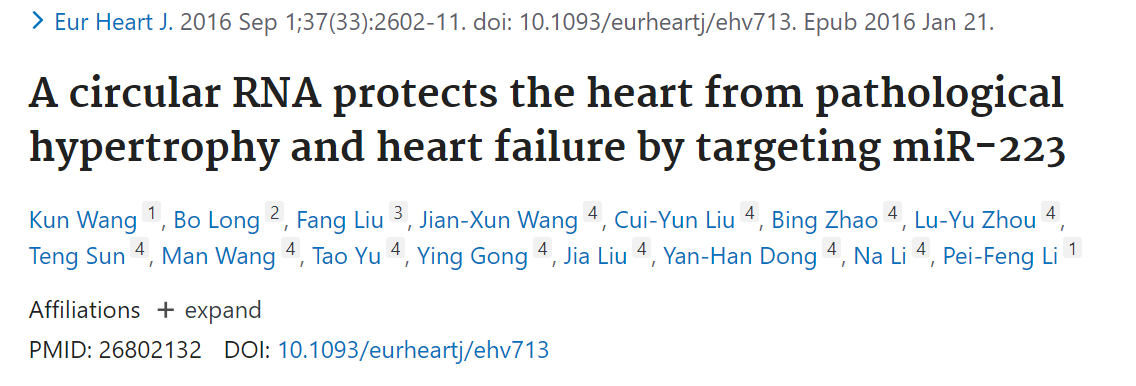Recently, the results of our research on the regulation of cardiomyocyte hypertrophy signaling pathways were published in the European Heart Journal. Myocardial hypertrophy is the general term for the increase in the volume of myocardial cells at the cellular level and the thickening of myocardial tissue at the tissue level. It is a disease in which the volume of the heart increases due to the increase in the volume of myocardial cells. Previous studies have shown that cardiomyocyte hypertrophy signals a change in myocardial morphology in the process of heart disease, and it is a risk factor for heart disease and sudden death. Myocardial hypertrophy is initially a physiological compensation mechanism, but continuous myocardial hypertrophy eventually leads to heart disease and heart failure.

The relief and reversal of cardiomyocyte hypertrophy is a potential method for the treatment of heart failure. However, the molecular mechanism that regulates cardiomyocyte hypertrophy remains to be further studied. Circular RNA (circRNA) is a non-linear, self-looping noncoding RNA molecule that was discovered in recent years. It has been verified to play an important regulatory role in the occurrence and development of many diseases. However, at present, whether circRNA regulates cardiomyocyte hypertrophy and related heart diseases is still unknown.
In our research, we discovered a circRNA (named HRCR) that inhibited the occurrence of cardiomyocyte hypertrophy and cardiac hypertrophy. MiR-223 transgenic mice spontaneously developed cardiac hypertrophy and heart failure, whereas miR-223 knockout mice resisted pathological cardiac hypertrophy induced by ISO. MiR-223 promoted cardiomyocyte hypertrophy by targeting the inhibition of the expression of ARC. HRCR adsorbed the endogenous miR-223 of cardiomyocytes, inhibited its function, and increased the expression of its downstream target ARC, thereby inhibiting cardiomyocyte hypertrophy. Our study discovered a new signaling pathway composed of HRCR/miR-223/ARC involved in the regulation of cardiomyocyte hypertrophy and heart failure, providing a new potential target for the prevention and treatment of cardiac hypertrophy and heart failure.